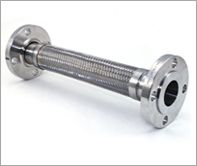Walk onto any factory floor, and you’ll notice something immediately—the constant symphony of moving parts. Behind that choreographed industrial dance lies something invisible yet absolutely critical: control systems that prevent catastrophe during a mishap. These systems aren’t just technical components; they’re the difference between smooth operations and devastating accidents that can bring everything to a grinding halt.
Many plant managers discover the hard way that integrating machine safety services isn’t merely about ticking regulatory boxes. It’s about creating an environment where million-dollar equipment operates efficiently while keeping flesh-and-blood workers safe. Machine safety services have evolved dramatically over the past decade, shifting from simple emergency stops to sophisticated integrated systems that anticipate problems before they occur.
When Safety Systems Fail: The Nightmare Scenario
Picture this: A maintenance technician bypasses a malfunctioning safety interlock, “Just for today,” to keep production moving. Hours later, unexpected machine movement traps a worker, causing injury and triggering a facility-wide shutdown. OSHA investigators arrive. Production stops completely. Legal teams scramble. Insurance premiums skyrocket. And worst of all—someone got hurt on your watch.
This nightmare haunts operations managers everywhere. The CDC reports that manufacturing accounts for roughly 15% of all fatal workplace accidents, despite making up a much smaller percentage of the workforce. Behind most of these incidents? Inadequate control system integration with safety protocols.
Breaking Down the Control System Safety Connection
Think of control systems as the nervous system of industrial operations. They process countless inputs, make split-second decisions, and direct machinery accordingly. When properly configured for safety, they create invisible protection zones that adapt to changing conditions.
What makes today’s approach different:
- Zone-based safety that allows partial operation during maintenance
- Adaptive protocols that change based on operator presence
- Fault-tolerant architectures that prevent catastrophic failures
- Real-time monitoring that catches safety violations immediately
- Data collection for identifying systemic risks before accidents occur
Old-school safety relied on physical barriers and human vigilance. Modern safety integrates directly with control architecture, making it virtually impossible to circumvent protections accidentally.
The Competitive Edge Nobody Talks About
Here’s something rarely discussed at industry conferences: Manufacturers with superior safety control systems consistently outperform competitors financially. This isn’t coincidence—it’s causal.
Why? Because the same sophisticated control systems that enable advanced safety also deliver:
- Reduced downtime from false safety trips
- Less time lost to accident investigations
- Lower insurance costs and regulatory penalties
- Improved worker confidence leading to higher throughput
- Longer equipment lifespan through proper operation
Smart plant managers have figured out that upgrading safety control systems isn’t a cost center—it’s a strategic investment with measurable ROI beyond just preventing accidents.
Making Smart Safety Decisions
The moment to evaluate control system safety usually arrives at one of two times: before or after a serious incident. The first is significantly less expensive.
Forward-thinking operations examine their safety control systems with these questions:
- Can our current controls adapt to changing production requirements?
- Do safety systems integrate seamlessly with production controls?
- Are we collecting data that helps prevent future incidents?
- Can operators easily understand and work with safety protocols?
With manufacturing competition fiercer than ever, control systems that effectively balance safety and productivity aren’t optional—they’re essential for survival. As automation increases across industries, the dividing line between industry leaders and followers increasingly comes down to how effectively they implement these critical systems.
Featured Image Source: https://cdn.pixabay.com/photo/2014/09/01/18/20/workers-433016_1280.jpg







